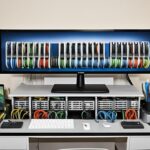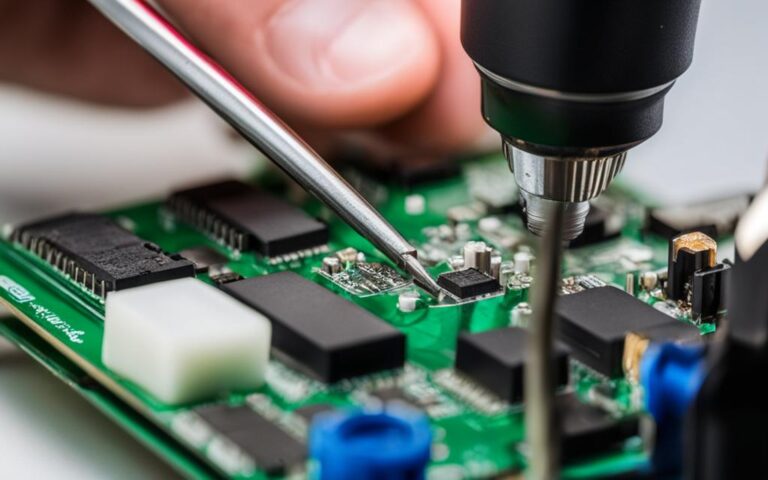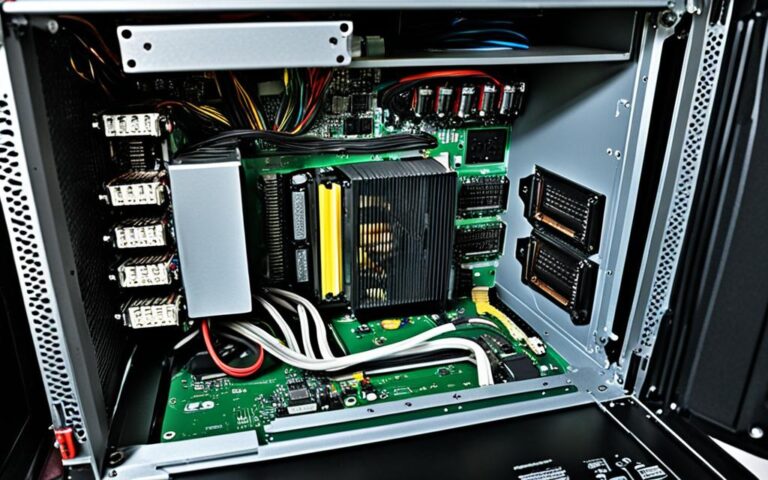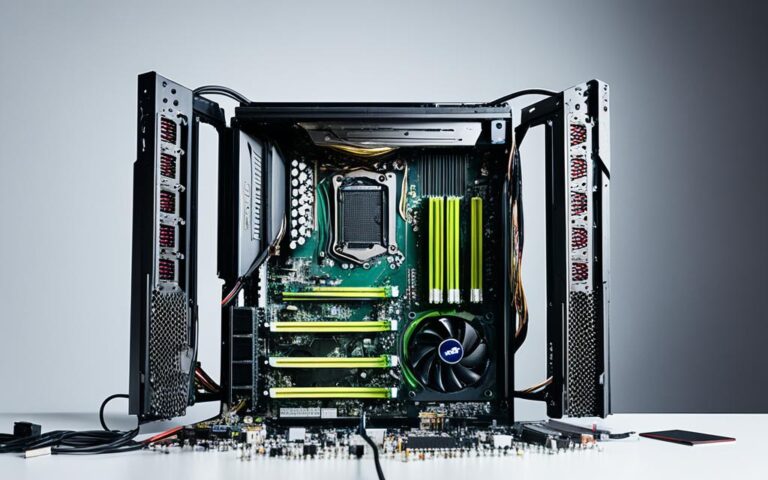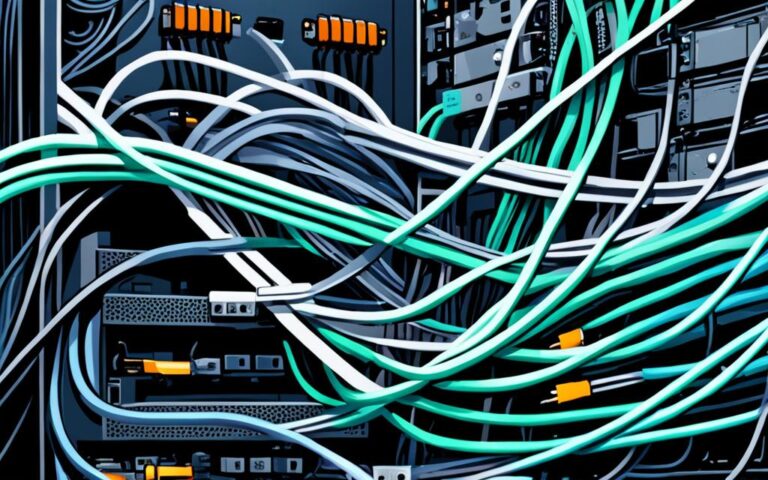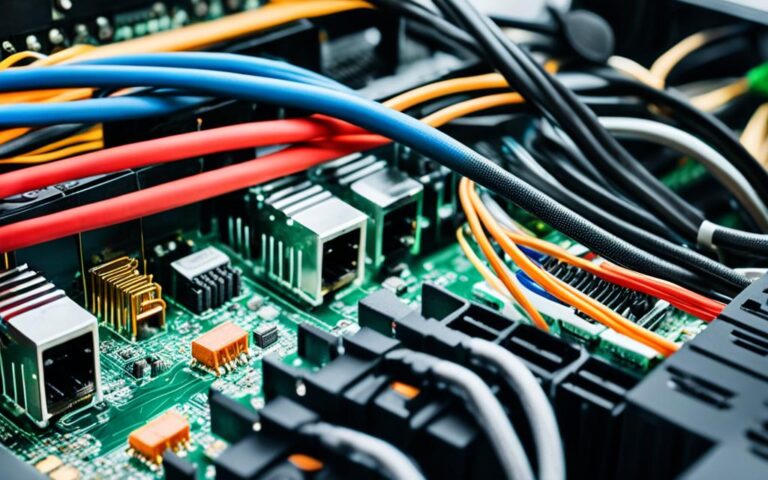Troubleshooting Desktop Video Display Problems
When experiencing issues with your desktop video display, it can be frustrating and disruptive to your work. However, there are steps you can take to troubleshoot and resolve these problems. Whether you’re facing distorted images, flickering screens, or no display at all, we’ve got you covered.
In this article, we will guide you through video display troubleshooting on your desktop computer. From optimizing your computer using SupportAssist to checking for physical damage and adjusting display settings, we will cover all the necessary steps to get your video display back on track.
Let’s dive into the world of video display troubleshooting and tackle those desktop display issues head-on.
Optimize your computer using SupportAssist
Dell Technologies recommends using the SupportAssist application to optimize your computer and resolve common video-related issues. SupportAssist can help ensure that device drivers and BIOS are up to date, improving video performance.
To optimize your computer using SupportAssist, follow these steps:
- Search for SupportAssist in the Windows search box.
- Select the app from the results.
- Click “Start Now” to run the tests.
SupportAssist will run tests and provide results along with suggested actions for optimal video performance.
“Using SupportAssist to optimize your computer is a convenient way to ensure that your device drivers and BIOS are up to date, enhancing the overall video performance of your desktop. Don’t overlook the benefits of this useful application in resolving common video-related issues.”
Verify display or video issue on a known-good monitor
To identify the source of a display or video issue, it is recommended to connect your computer to a known-good monitor or TV. This helps determine if the problem lies with the monitor, video card, or video settings on your computer. Make sure that the display cable is firmly connected to both the computer’s video port and the monitor. If the issue persists on the known-good monitor, it may indicate a problem with the video card or video settings. Otherwise, further troubleshooting steps can be taken.
If you’re experiencing a display issue, connecting your computer to a known-good monitor is an essential step in the troubleshooting process. By doing so, you can eliminate the monitor itself as the root cause of the problem. This will help you narrow down the issue to either the video card or the video settings on your computer.
Start by ensuring that the display cable is securely connected to both the computer’s video port (such as HDMI, DisplayPort, or VGA) and the monitor. Loose or improperly connected cables can result in display problems. Once you have verified the cable connection, power on the known-good monitor and switch the input source to the connected video port. If the display issue persists on the known-good monitor, it suggests a potential problem with the video card or video settings.
If the issue is specific to the known-good monitor, it is likely that the monitor itself is faulty. However, if the issue persists regardless of the monitor used, it indicates that the problem lies with the video card or the video settings on your computer.
“By connecting your computer to a known-good monitor, you can effectively diagnose display issues and determine whether the problem lies with the monitor, video card, or video settings. This step eliminates any ambiguity and allows for focused troubleshooting.”
In cases where the display issue persists on the known-good monitor, the next step is to troubleshoot the video card and video settings. Ensure that the video card is securely seated in its slot and that all required power connectors are properly connected. If necessary, consider updating the video card drivers to the latest version, as outdated drivers can sometimes cause display problems.
Additionally, verify the video settings on your computer. Check the display resolution, refresh rate, and color depth settings to ensure they are correctly configured. Incorrect video settings can result in display issues, such as distorted or blurry images. Adjust the settings as needed to match the specifications recommended for your monitor.
Remember, troubleshooting display issues can be a trial-and-error process, but by systematically verifying the display or video issue on a known-good monitor, you can effectively identify the root cause and take appropriate steps to rectify the problem.
Check for physical damage
Physical damage to display cables or the LCD screen can result in performance issues with the video display. Identifying signs of physical damage is crucial in troubleshooting and resolving these problems.
Physical Damage Symptoms
When inspecting the display, watch out for the following symptoms that may indicate physical damage:
- Non-working or intermittent LCD screen
- Color mismatch
- Flickering
- Horizontal or vertical lines
If any of these symptoms are present, it is advisable to contact Dell Technical Support or a qualified technician to explore repair options.
If there are no visible signs of physical damage, it is recommended to proceed with the next troubleshooting step to further diagnose and resolve the performance issues.
| Performance Issue | Possible Causes |
|---|---|
| Non-working or intermittent LCD screen | Loose or damaged display cables |
| Color mismatch | Physical damage to the LCD screen |
| Flickering | Loose connections or faulty cables |
| Horizontal or vertical lines | Damage to the LCD screen |
By understanding the potential causes of performance issues related to physical damage, you can take the necessary steps to resolve them effectively. Remember to seek professional assistance when needed to ensure proper repairs and maintenance.
Run hardware diagnostics on the Dell monitor
In order to pinpoint the cause of screen abnormalities, it is crucial to run hardware diagnostics on the Dell monitor. Dell provides diagnostic tools that assist in determining whether the monitor itself or the video card and computer settings are responsible for the issues. By utilizing the self-test feature check (SFTC) and the integrated self-test (BIST) or integrated diagnostic (BID) tool, it is possible to identify any underlying problems in the monitor.
Running a diagnostic test on your Dell monitor helps isolate the issue and establishes whether it is an inherent problem within the monitor or if it is related to the video card and computer settings. To obtain detailed instructions on how to run a diagnostic test specific to your Dell monitor model, refer to the Dell Knowledge Base article.
Being able to accurately diagnose the source of screen abnormalities ensures that appropriate solutions can be implemented effectively, leading to a smoother and more reliable video display experience.
Example of a Diagnostic Test Result
| Test | Result |
|---|---|
| SFTC | Pass |
| BIST/BID | Fail |
As displayed in the table above, the example diagnostic test result indicates that the self-test feature check (SFTC) passed, but the integrated self-test (BIST) or integrated diagnostic (BID) failed. This suggests that the issue may lie in either the video card or the computer settings.
Adjust display settings and update Windows
When encountering video display issues on your Dell computer, adjusting the display settings and keeping Windows updated can often provide effective solutions. By optimizing key parameters such as brightness, refresh rate, resolution, and power management, you can enhance the overall video display performance.
To adjust these display settings, you can either utilize the keyboard shortcuts or access the on-screen display menu on your Dell computer. These options allow you to customize the visual elements according to your preferences and address any specific display issues you may be facing.
In addition to adjusting display settings, it is crucial to regularly update Windows to ensure your computer benefits from the latest bug fixes and improvements. Windows updates often provide specific enhancements related to video display, resolving compatibility issues and optimizing performance.
To run Windows Updates, follow these recommended steps:
- Click on the Windows Start menu and select “Settings”.
- In the Settings window, click on “Update & Security”.
- Within the Update & Security menu, click on “Windows Update”.
- Click on “Check for updates” to scan for any available updates.
- If updates are found, click on “Install” to begin the installation process.
- Restart your computer if prompted to complete the update installation.
By regularly adjusting display settings and updating Windows, you can effectively troubleshoot and mitigate common video display issues on your Dell computer.
“Optimizing display settings and keeping Windows updated are vital steps in resolving video display problems and ensuring optimal visual performance on your Dell computer.” – Dell Technical Support
Display Settings:
| Setting | Description |
|---|---|
| Brightness | Control the overall brightness level of the display for improved visibility. |
| Refresh Rate | Adjust the frequency at which the display refreshes, reducing screen flickering and enhancing smoothness. |
| Resolution | Determine the clarity and level of detail in the visual output by selecting the appropriate resolution setting. |
| Power Management | Easily customize power-saving options to manage energy consumption and optimize battery life. |
Make sure to fine-tune these display settings according to your preferences and specific requirements to achieve the best video display performance on your Dell computer.
Conclusion
Troubleshooting video display problems on a desktop computer can involve several steps to ensure optimal performance and resolve common issues. By following the recommended troubleshooting methods, you can effectively address video display problems and get your desktop computer back to working properly.
One of the first steps in troubleshooting is to optimize your computer using the SupportAssist application. This helps ensure that device drivers and BIOS are up to date, improving video performance. Additionally, checking for physical damage is crucial, as issues with display cables or the LCD screen can cause performance problems. If physical damage is observed, it is recommended to contact Dell Technical Support for repair options.
Running hardware diagnostics on the monitor can help identify if the problem lies with the monitor or the video card. Dell monitors have diagnostic tools such as the self-test feature check (SFTC) and integrated self-test (BIST) or integrated diagnostic (BID) tool that can be used to diagnose issues. Adjusting display settings, including brightness, refresh rate, resolution, and power management, can often resolve video display issues. Finally, keeping Windows updated with the latest updates can provide bug fixes and improvements for the operating system.
If all else fails, performing a Windows System Restore or restoring the computer to factory defaults may be necessary. These steps can help restore the computer to a previous working state. By following these troubleshooting methods, you can effectively resolve video display issues and ensure optimal performance on your desktop computer.






